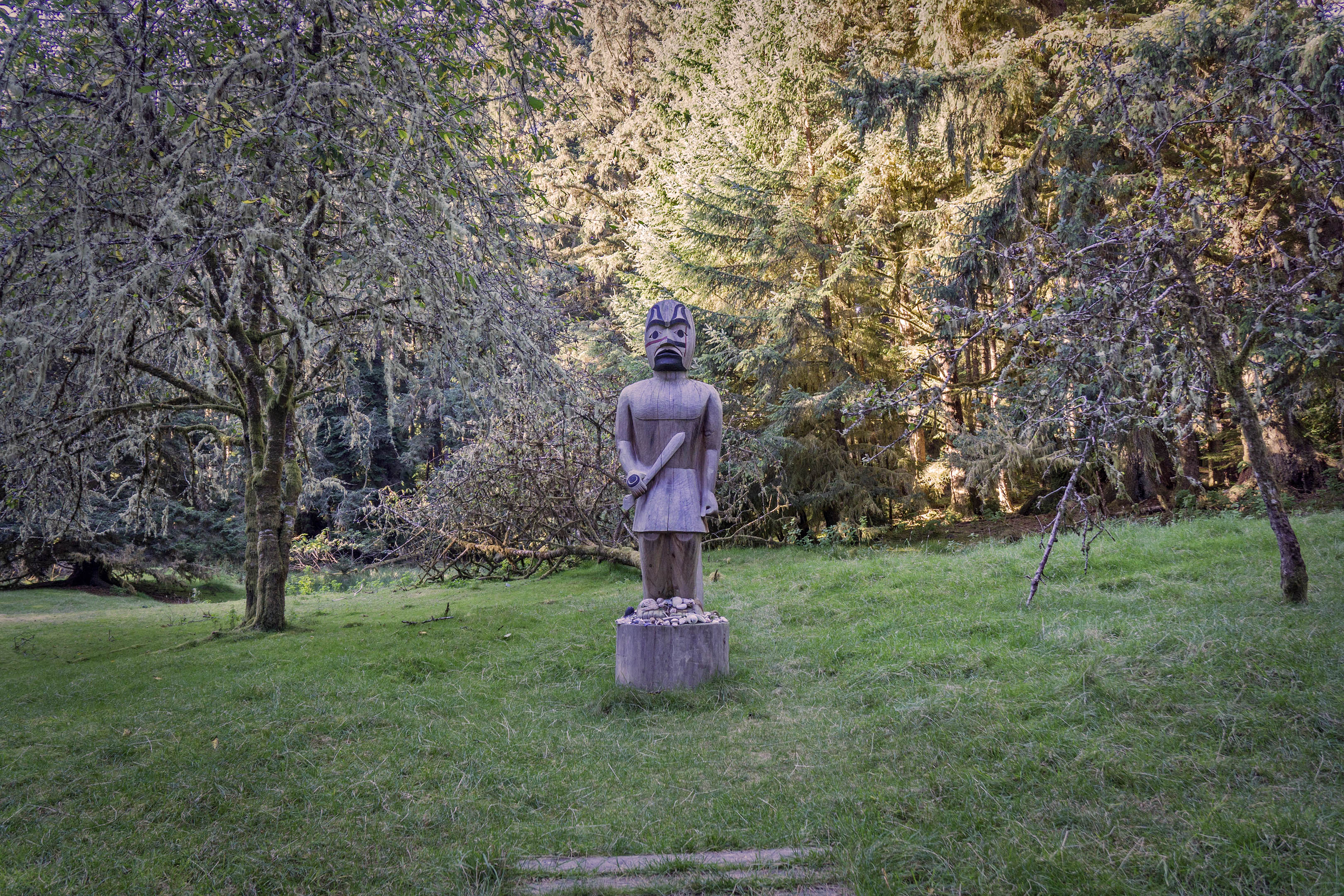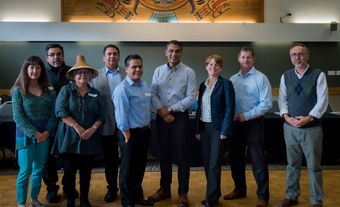
Territory and Population
The Tseshaht (“the people of Ts’ishaa”) come from present-day Benson Island in Barkley Sound. Formerly a number of small independent groups whose territory was confined to some of the outer islands of the Broken Island Group, the Tseshaht developed into a powerful nation during the 19th century through conquering and amalgamating with other groups, such as the Hikwuulh7ath and the Hach’aa7ath, and absorbing their territories. Throughout the 1800s, the Tseshaht had expanded their territory to include all of the Broken Islands, most of the north shore of Barkley Sound, Alberni Inlet and the lower Somass River. (See also Indigenous Territory.)
Today, the Tseshaht live mainly on the Tsahaheh reserve near Port Alberni. As of September 2018, the federal government counted 1,212 registered members of the Tseshaht First Nation, the majority of whom (728) live off reserve. The remaining population live on reserve (442) or on other reserves (42).
Traditional Life
The Tseshaht hunted and travelled according to the seasons and to animal migrations. In late winter and early spring, they went to the coast to hunt sea mammals and to fish; by August, they moved back to their sheltered winter villages, and caught salmon from the Alberni Inlet and the Somass River. The hereditary privileges attached to these lands, known as Tutuupata, governed their traditional economy.
Society and Governance
Tseshaht society was traditionally governed by the ha-wiih (hereditary chiefs), of whom the highest-ranking was the King (Tyee Ha’wilth). According to the Tseshaht nation, kings were considered “the closest spiritual bloodline to our chronicle of creation.” Kings held special rights and privileges to territories, hunting rights, histories and more. The other hereditary chiefs also owned the rights to certain territories and rituals, but it was the king who presided over the nation as a whole. Commoners (muschim) and slaves took up the middle and lowest ranks of society, respectively.
In 2004, the Tseshaht adopted an elected system of government. While hereditary leaders still play an important role in Tseshaht culture and society, the nation now also elects a chief councillor who governs for a four-year term, with up to nine supporting councillors.
Culture
Historically, the Nuu-chah-nulth have had a strong ceremonial culture, characterised by feasting and entertainment with song, dance, contests and theatricals. (See also Potlatch.) The Nuu-chah-nulth have also been known for their stunning woodwork, including canoes, totem poles, multifamily houses and other products hand-crafted out of fine cedar. (See also Northwest Coast Indigenous Art.)
Whaling is an important aspect of Tseshaht history and culture. In addition to its economic value, whaling was essential to Nuu-chah-nulth spirituality. Whales appeared in legends, family names, songs and place names. Whaling was so sacred that it was restricted to the ha-wiih. The Tseshaht mainly hunted humpback whales, and to a lesser extent, gray whales. Humpbacks’ large size provided the Tseshaht with more meat, oil and natural products than any other whale species.
Language
The Tseshaht speak a dialact of Nuu-chah-nulth, known as Ćišaaʔatḥ. With the implementation of certain federal policies and programs, such as residential schools, the language has become endangered. In 2015, there were only five reported fluent speakers, in addition to 25 learning speakers and 26 people who somewhat spoke or understood the language. However, the Tseshaht nation is working to preserve and promote their language to new generations of speakers.
Religion and Spirituality
The Nuu-chah-nulth belief system centres on a Creator being as well as spirits whose powers can be used to bring peace and fortune. The Nuu-chah-nulth believe that all life forms have a spirit, and should therefore be respected and appreciated. Shamans ensured the spiritual health of the people by practising ancient medicines and healing rituals to cure illness and restore balance to the soul. (See also Indigenous People: Religion and Spirituality.)
Origin Stories
Tseshaht stories tell of Nas, the Creator, who formed the first people. Created at Ts’ishaa, the first Tseshaht man and woman were entrusted with the spiritual responsibility and stewardship of the Broken Group Islands and its inhabitants.
Colonial History
By the 1900s, the increased presence of European settlers on Nuu-chah-nulth lands forced them onto government-created reserves. Assimilationist federal policies — including the Indian Act and residential schools — eroded Nuu-chah-nulth culture and traditional ways of life. Nuu-chah-nulth peoples continue to work towards revitalizing and preserving their language, culture and spirituality.
Contemporary Life
The Tseshaht First Nation conducts fishing and forestry operations on their territory, as well as a market and gas station. The nation also provides its members with a variety of services, including housing, healthcare, education and more.
The Tseshaht are part of the Nuu-chah-nulth Tribal Council, an association founded in 1958 that provides various services to approximately 9,500 registered members, including child welfare, education, employment training and other socio-economic programs that support health and development.
The Tseshaht are in stage four of a six-stage treaty process in British Columbia to achieve self-government.

 Share on Facebook
Share on Facebook Share on X
Share on X Share by Email
Share by Email Share on Google Classroom
Share on Google Classroom




